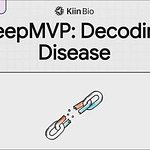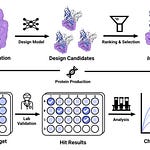Computational chemistry is pivotal in drug discovery, yet its steep learning curve and technical complexity often hinder accessibility. To bridge this gap, researchers have developed El Agente Q, an LLM-based multi-agent system that automates quantum chemistry workflows through natural language prompts. By integrating advanced AI with computational tools, El Agente Q empowers scientists to focus on innovation rather than manual scripting.
Key Features:
Automated Workflow Generation:
Dynamically designs and executes multi-step quantum chemistry tasks (e.g., geometry optimization, electronic structure analysis) from user prompts. Achieves >87% success rate across university-level benchmarks, including complex tasks like pKa prediction and solvent effect modeling.Adaptive Error Handling:
Self-corrects runtime errors (e.g., invalid input files, imaginary frequencies) through hierarchical feedback loops. Case studies demonstrate recovery from ORCA keyword errors and structural optimization failures.Scalability for Long-Term Tasks:
Hierarchical architecture decomposes complex workflows into manageable subtasks, enabling multi-day calculations. Successfully managed 3.2 million tokens and 112 actions in carbocation stability studies.User Accessibility:
Requires only natural language input, lowering barriers for non-experts. Exports actionable Jupyter notebooks for transparency and high-throughput screening.Tool Integration:
Interfaces with quantum chemistry software (ORCA, xTB), structure generators (RDKit, Architector), and HPC systems (SLURM). Case studies include modeling lanthanoid complexes and solvent-dependent IR spectra.
Applications in Drug Discovery:
El Agente Q accelerates critical tasks such as:
Molecular Property Prediction: Calculating thermodynamic stability, electronic properties, and spectral shifts for drug candidates.
Solvent Effect Modeling: Analyzing solvent interactions (e.g., explicit/implicit water models) to optimize drug solubility.
Metal Complex Design: Automating geometry optimization and electronic structure analysis for organometallic catalysts.
Current Limitations:
Geometry Generation: Relies on external tools (e.g., OpenBabel) that may produce unstable conformers.
Assumption Risks: Occasionally makes unverified approximations (e.g., arbitrary scaling in pKa calculations).
Post-Analysis Gaps: Missing reports in large-scale batches, though resolvable via follow-up prompts.
Future Roadmap:
Planned enhancements include:
Expanded Methodologies: Integration of machine learning, MD simulations, and high-throughput screening.
Broader Software Support: Compatibility with Gaussian, Q-Chem, and materials science tools (VASP, Quantum ESPRESSO).
Self-Driving Lab Integration: Linking computational workflows with experimental platforms for autonomous discovery.
Conclusion:
El Agente Q represents a transformative leap in computational chemistry, combining AI-driven automation with domain expertise. By streamlining quantum chemistry workflows, it promises to accelerate drug discovery, catalyst design, and materials innovation. As the system evolves, it aims to democratize access to advanced simulations, enabling scientists to tackle grand challenges with unprecedented efficiency.
Explore El Agente Q’s alpha version at https://elagente.ca and stay tuned for updates on its expanding capabilities!









